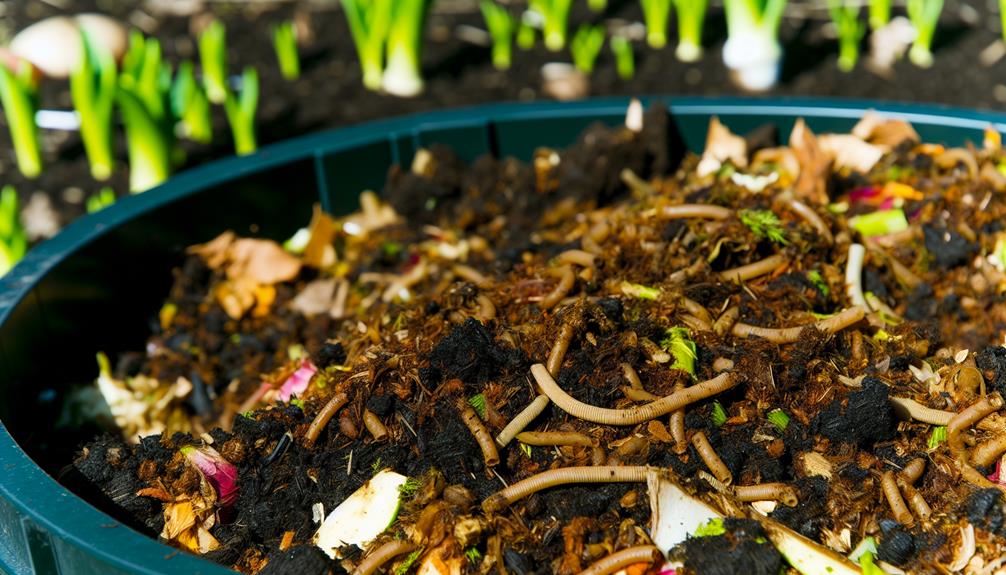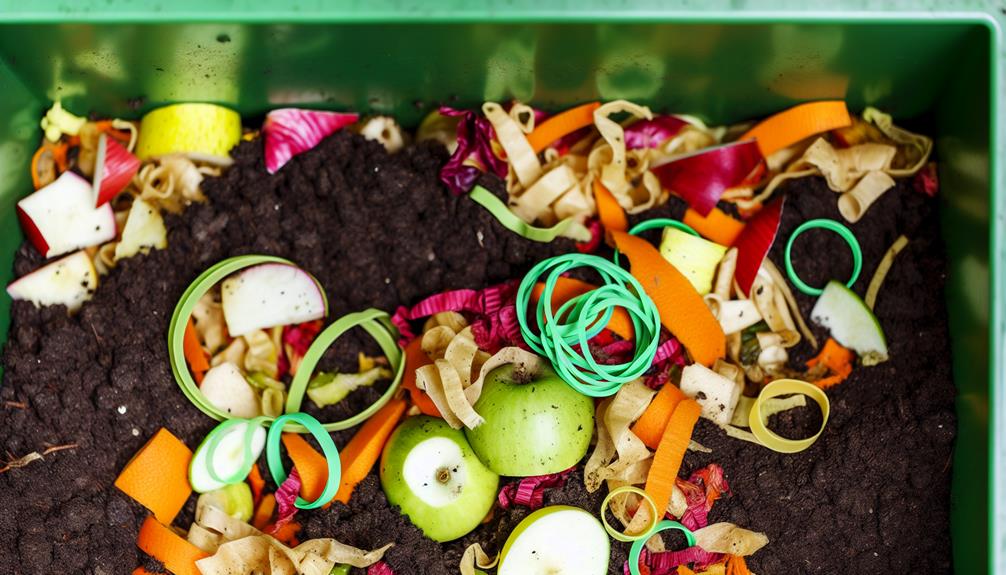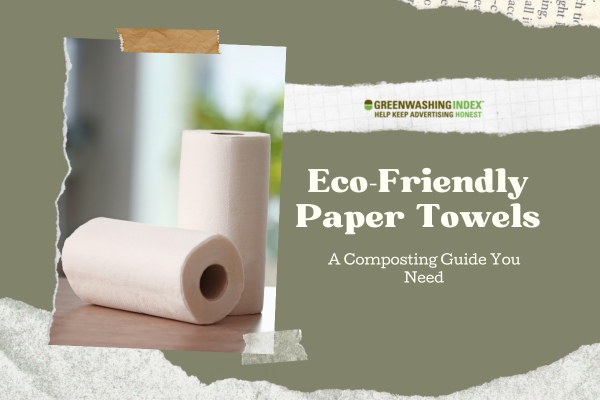Eco-friendly elastic bands are an innovative solution for those looking to minimize their environmental footprint. Made from natural rubber, these bands are biodegradable and compostable, making them a sustainable alternative to traditional synthetic options that contribute to pollution.
As awareness about waste reduction grows, eco-conscious consumers are increasingly turning to these green alternatives. By choosing eco-friendly elastic bands, you not only support sustainable practices but also help foster a healthier planet for future generations.
Are Rubber Bands Biodegradable?
Rubber bands are ubiquitous office and household items with complex environmental implications. While they might seem insignificant, their global production and disposal have substantial ecological consequences. Their biodegradability requires examining their composition, origin, and environmental impact.

Rubber bands’ biodegradability depends on their material composition:
- Natural Rubber Bands: Biodegradable and compostable, taking approximately 10-20 years to decompose.
- Synthetic Rubber Bands: Non-biodegradable, potentially taking 50-300 years to break down.
Microbial Degradation:
- Bacteria like Rhizobacter gummiphilus can degrade natural rubber.
- Lactobacillus plantarum has shown potential in natural rubber degradation.
Recommendation: Prioritize reusing rubber bands and choosing natural, biodegradable options when possible.
Are Rubber Bands Compostable?
Rubber bands are ubiquitous in our daily lives, used for bundling, organizing, and securing items. While they seem simple, their environmental impact is complex. Whether rubber bands can be composted requires examining their composition, origin, and decomposition characteristics.
Natural rubber bands offer a more sustainable option compared to synthetic alternatives, presenting an interesting opportunity for environmentally conscious waste management.
Rubber bands are primarily made from two types of materials:
- Natural Rubber: Sourced from latex in rubber trees, these bands are biodegradable and can potentially be composted.
- Synthetic Rubber: Typically made from petroleum-based chemicals, these bands do not decompose and should not be composted.
Composting Considerations
Composting rubber bands requires careful evaluation of their material composition and environmental conditions. Natural rubber bands decompose more effectively in well-maintained compost piles with optimal temperature, moisture, and microbial activity.
The breakdown process depends on factors like band thickness, cutting size, and overall compost pile health. Smaller, thinner bands will decompose faster compared to thicker, more robust rubber bands.
Natural rubber bands can be composted under specific conditions:
- They break down in a well-maintained compost pile.
- Decomposition takes approximately 6-24 months.
- Cutting bands into smaller pieces accelerates breakdown.
Recommendations: Implementing sustainable practices with rubber bands involves conscious decision-making and strategic approaches. Consumers can minimize environmental impact by purchasing natural rubber bands, reusing existing bands, and properly disposing of them through composting or specialized recycling programs.
- Prioritize natural rubber bands.
- Cut bands into smaller pieces before composting.
- Maintain a well-balanced compost environment.
- Reuse rubber bands whenever possible.
How is Rubber Band Made?
Rubber bands are typically made from either natural rubber or synthetic materials such as silicone. Understanding the source and composition of rubber is key in determining whether these bands are compostable.
Natural rubber is derived from the sap of rubber trees, primarily found in tropical regions like Southeast Asia. These trees have been tapped for centuries, offering a renewable and sustainable source of rubber. Synthetic rubber, however, is manufactured from petroleum-based chemicals designed to replicate the properties of natural rubber.
Rubber bands made from natural rubber are biodegradable, meaning they break down over time and can be composted. When they decompose, they return valuable nutrients to the soil, making them a more eco-friendly option for composting. Therefore, if your rubber bands are made from natural rubber, they can be safely added to your compost pile.
On the other hand, rubber bands made from synthetic materials like silicone are more durable, heat-resistant, and long-lasting. However, silicone rubber is not biodegradable, which means it is unsuitable for composting. Instead, these bands should be reused or recycled.
To support sustainability and maintain a composting process free from non-biodegradable materials, it’s important to prioritize rubber bands made from natural rubber when composting. This simple step helps reduce waste and promotes environmental responsibility.
Natural Rubber vs Synthetic Rubber
When comparing natural rubber to synthetic rubber, you should understand their compositions first. Natural rubber comes from the sap of rubber trees, making it biodegradable.
| Category | Natural Rubber | Synthetic Rubber |
|---|---|---|
| Source | Derived from the sap of rubber trees (latex) | Produced from petroleum-based chemicals (petrochemicals) |
| Environmental Impact | Biodegradable, more eco-friendly | Non-biodegradable, contributes to pollution and waste |
| Harvesting Process | Harvested through ‘rubber tapping,’ where sap is collected | Produced in factories from chemical processes |
| Elasticity & Resilience | Excellent elasticity and flexibility, ideal for durable products | Can be tailored for specific uses but lacks natural elasticity |
| Biodegradability | Biodegradable, breaks down naturally | Not biodegradable, persists in landfills for years |
| Environmental Concerns | Lower environmental impact, renewable source | Contributes to fossil fuel depletion and greenhouse gas emissions |
| Recycling | Easier to compost and break down | Difficult to recycle, adds to plastic waste |
| Sustainability | More sustainable due to natural origins and biodegradability | Less sustainable due to reliance on petroleum and lack of biodegradability |
| Uses | Ideal for flexible products (e.g., rubber bands, tires) | Used in various industries, can be tailored to specific needs |
On the other hand, synthetic rubber is derived from petroleum-based chemicals, which means it has a greater environmental impact.
Rubber vs Plastic Environment
Rubber and plastic have significant environmental implications that impact our planet’s ecosystem. While both materials are widely used in various industries, their environmental footprints differ substantially.
| Aspect | Rubber | Plastic |
|---|---|---|
| Biodegradability | Natural rubber is biodegradable. | Typically non-biodegradable; takes 20-500 years to break down. |
| Resource Origin | Derived from renewable tree latex. | Made from fossil fuels like natural gas and petroleum. |
| Production Impact | Requires land and water resources. | Generates significant carbon emissions. |
| Recycling Potential | Recyclable, but energy-intensive. | Limited recycling efficiency; less than 50% recycled. |
| Environmental Longevity | Decomposes faster than synthetic materials. | Persists in ecosystems for hundreds of years. |
| Pollution Risk | Can leach chemicals during breakdown. | Creates microplastics, threatens marine life. |
Natural rubber and plastic represent two distinct material categories with unique characteristics that influence their sustainability, biodegradability, and long-term environmental impact.
Also Read: Can You Compost Cat Manure?
Harmful Effects of Rubber Bands
Rubber bands, seemingly harmless everyday objects, conceal significant environmental and health risks. These flexible elastic materials are ubiquitous in various settings, from office supplies to medical applications, yet their potential negative impacts often go unnoticed by consumers and professionals alike.
Environmental Impact
Synthetic rubber bands represent a substantial environmental challenge, contributing to long-term pollution and ecological disruption. Their non-biodegradable composition means they persist in ecosystems for decades, accumulating in landfills, oceans, and natural habitats.
The manufacturing process itself generates considerable carbon emissions, further exacerbating environmental degradation and climate change concerns.
- Non-Biodegradability: Synthetic rubber bands can take up to 300 years to break down completely. Annually, over 13,000 tons of rubber bands are sold, with most ending up in landfills, soil, and waterways.
Health Risks
Rubber bands contain complex chemical compositions that can potentially harm human health. Synthetic variants often include phthalates, lead, and other toxic substances that may cause allergic reactions, skin irritations, and potential long-term health complications.
Prolonged exposure to these materials can lead to respiratory issues, dermatological problems, and potential endocrine disruption.
- Chemical Contamination: Many rubber bands contain potentially harmful chemicals:
- Phthalates and lead may be present in synthetic rubber bands.
- Latex Workout Bands: Found to contain nitrosamines, carcinogenic chemicals up to 6,000 times higher than legal safety limits.
Potential Hazards
The multifaceted risks associated with rubber bands extend beyond individual health concerns. They pose significant threats to wildlife, marine ecosystems, and environmental sustainability. Animals can mistake rubber bands for food, leading to ingestion and potential fatal consequences.
Additionally, these elastic materials can entangle marine creatures, causing severe injuries and disrupting delicate ecological balances.
Allergic Reactions
- Approximately 1-6% of people have latex allergies
- Symptoms can range from mild skin irritation to severe reactions like anaphylaxis.
Environmental Contamination
- Rubber bands can end up in waterways and oceans.
- Pose significant threats to marine life and ecosystem health.
Recommendation: Exercise caution when using rubber bands, particularly those made from synthetic materials, and prioritize environmentally friendly alternatives.
How Rubber Bands Affect Soil?
When synthetic rubber bands end up in the soil, they can cause significant harm by releasing toxic chemicals and disrupting soil health. These rubber bands are made from materials that don’t break down easily, leading to long-term environmental issues.
Here’s how they affect your soil:
- Soil Acidity: Synthetic rubber bands can alter the pH levels of the soil, increasing its acidity. This change can make it difficult for plants to absorb essential nutrients, stunting their growth and reducing crop yields.
- Microbial Health: Healthy soil teems with beneficial microbes that help decompose organic matter and recycle nutrients. Rubber bands introduce harmful chemicals that can kill or inhibit these microbes, undermining the soil’s natural fertility and resilience.
- Physical Contamination: Rubber bands can physically disrupt the soil structure. They can entangle plant roots, impede water infiltration, and create barriers that make it harder for plants to access the nutrients they need.
To maintain a healthy garden and community space, it’s important to be mindful of what you introduce into the soil. Avoiding synthetic rubber bands can go a long way in preserving the delicate balance of soil acidity and microbial health, ensuring your plants thrive and your soil remains fertile.
Alternatives to Rubber Bands
One effective alternative is reusable ties. These ties are made from durable materials like silicone or cloth, and they can be used multiple times. You simply wrap them around your produce or other items, securing them with a simple twist. They come in various sizes and colors, making them a versatile choice for different needs.
Another great option is twine alternatives. Natural twine, often made from jute, hemp, or cotton, is biodegradable and compostable. It’s perfect for bundling vegetables, herbs, or even garden plants. You can find twine in different thicknesses, ensuring you have the right strength for various tasks.
Both reusable ties and twine alternatives align with eco-friendly practices and can help you reduce waste. By choosing these options, you contribute to a community that values sustainability and environmental responsibility. Plus, they’re easy to find at most stores or online, making the switch straightforward.
Embracing these alternatives not only benefits the planet but also connects you with like-minded individuals who prioritize green living.
Also Read: Can You Compost Cat Food?
How to Dispose of Rubber Bands?
Properly disposing of rubber bands helps reduce environmental harm and promotes sustainable waste management. While rubber bands aren’t typically recyclable through curbside programs, there are still ways you can manage their disposal responsibly.
First, consider reusing rubber bands as much as possible. You can store them in a designated spot and use them for various household tasks, like bundling items or securing packages. When reuse isn’t an option, explore recycling options.
Some specialized recycling programs accept rubber bands, so check with local recycling centers or mail-in programs. TerraCycle, for instance, offers zero waste boxes that accept rubber bands along with other small items.
If recycling options aren’t available, make sure to properly dispose of rubber bands by placing them in the trash. Although this isn’t the most environmentally friendly option, it’s better than letting them litter the environment where they can harm wildlife.
Composting Best Practices
Mastering composting best practices guarantees that your organic waste turns into nutrient-rich soil efficiently and sustainably. To make the most out of your compost bin, follow these guidelines:
- Balance Green and Brown Waste: Green waste includes items like vegetable scraps, coffee grounds, and grass clippings. Brown waste consists of materials like dried leaves, paper, and cardboard. Aim for a mix of about 2/3 brown to 1/3 green waste to maintain proper moisture and aeration.
- Maintain Proper Moisture Levels: Your compost should feel like a wrung-out sponge. If it’s too dry, add more green waste or a bit of water. If it’s too wet, incorporate more brown waste to absorb excess moisture and improve airflow.
- Turn Your Compost Regularly: Aerating your compost by turning it every couple of weeks helps speed up decomposition and prevents foul odors. Use a pitchfork or compost turner to mix the materials and promote even breakdown.
Frequently Asked Questions
Are Rubber Bands Bad for the Environment?
Rubber bands have mixed environmental impacts. Natural rubber bands are biodegradable, but synthetic ones contribute to pollution, taking up to 300 years to decompose and potentially harming marine ecosystems.
Is Synthetic Rubber Biodegradable?
Synthetic rubber, derived from petroleum, is generally not biodegradable. Unlike natural rubber, it does not easily decompose in the environment and can persist for hundreds of years.
Is Rubber Bands Renewable or Non Renewable?
Rubber bands are primarily made from natural latex, a renewable resource sourced from rubber trees. They are biodegradable and can be sustainably harvested over 25 years of a tree’s productive life.
How Long does it Take for a Rubber Band to Decompose?
Natural rubber bands take 10-20 years to decompose, while synthetic rubber bands can persist for up to 50 years in the environment, depending on conditions like temperature, moisture, and oxygen exposure.
Conclusion
It is evident that rubber bands present a complex environmental challenge, with their biodegradability depending on specific composition and manufacturing processes. While traditional rubber bands derived from synthetic materials pose significant ecological concerns, emerging eco-friendly elastic bands offer promising alternatives.
Manufacturers are increasingly developing biodegradable options using natural rubber and sustainable production techniques, demonstrating a commitment to reducing environmental impact. These innovative solutions provide consumers with more responsible choices for everyday elastic band usage, signaling a positive shift towards more sustainable product development.



